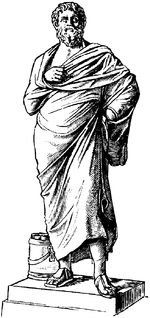
http://www.tbpac.org/
http://www.foxcitiespac.com/
http://www.utpac.org/
http://www.artscenter.org/
It is also during this time that the first plays were performed in the American Colonies.
During the 18th century the introduction of the popular opera buffa brought opera to the masses as an accessible form of performance. Mozart's The Marriage of Figaro and Don Giovanni are landmarks of the late 18th century opera.
At the turn of the 19th century Beethoven and the Romantic movement ushered in a new era that lead first to the spectacles of grand opera and then to the great musical dramas of Giuseppe Verdi and the Gesamtkunstwerk (total work of art) of the operas of Richard Wagner leading directly to the music of the 20th century.
The 19th century was a period of growth for the performing arts for all social classes, the technical introduction of gaslight to theaters in the United States, burlesque (a British import that became popular in the U.S.), minstrel dancing, and variety theater. In ballet, women make great progress in the previously male-dominated art.

Modern dance began in the late 19th century and early 20th century in response to the restrictions of traditional ballet.
Konstantin Stanislavski's "System" revolutionized acting in the early 20th century, and continues to have a major influence on actors of stage and screen to the current day. Both impressionism and modern realism were introduced to the stage during this period.
With the invention of the motion picture in the late 19th century by Thomas Edison, and the growth of the motion picture industry in Hollywood in the early 20th century, film became a dominant performance medium throughout the 20th and 21st centuries.
The Darktown Follies and the later cultural growth of the Harlem Renaissance spanned the 1910s to the early 1940s. Rhythm and blues, a cultural phenomenon of black America became a distinctive genera in the early 20th century.
In the 1930s Jean Rosenthal introduced what would be come modern stage lighting, changing the nature of the stage as the Broadway musical became a phenomenon in the United States. George Gershwin and Rodgers & Hammerstein radically re-shaped the medium as the Great depression ended and World War II erupted.
Starting in the 6th century BC, the Classical period of performing art began in Greece, ushered in by the tragic poets such as Sophocles. These poets wrote plays which, in some cases, incorporated dance (see Euripides). The Hellenistic period began the widespread use of comedy.
However, by the 6th century AD, Western performing arts had been largely ended, as the Dark Ages began. Between the 9th century and 14th century, performing art in the West was limited to religious historical enactments and morality plays, organized by the Church in celebration of holy days and other important events.


Dance (from Old French dancier, perhaps from Frankish) generally refers to human movement either used as a form of expression or presented in a social, spiritual or performance setting.
Dance is also used to describe methods of non-verbal communication (see body language) between humans or animals (bee dance, mating dance), motion in inanimate objects (the leaves danced in the wind), and certain musical forms or genres.
Choreography is the art of making dances, and the person who does this is called a choreographer.
Definitions of what constitutes dance are dependent on social, cultural, aesthetic artistic and moral constraints and range from functional movement (such as Folk dance) to codified, virtuoso techniques such as ballet. In sports, gymnastics, figure skating and synchronized swimming are dance disciplines while Martial arts 'kata' are often compared to dances.
The Performing arts include the dance, music, opera, theater, and circus arts.
Artists who participate in these arts in front of an audience are called performers, including actors, comedians, dancers, musicians, and singers. Performing arts are also supported by workers in related fields, such as songwriting and stagecraft.
Performers often adapt their appearance, such as with costumes and stage makeup, etc.

There is also a specialized form of fine art in which the artists perform their work live to an audience. This is called Performance art. Most performance art also involves some form of plastic art, perhaps in the creation of props. Dance was often referred to as a plastic art during the Modern dance era.
